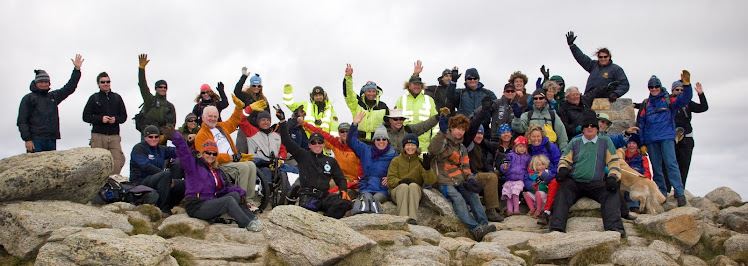While there has been a great deal of research that looks at the experiences of people with disabilities while they are travelling (see constraints blog post), there has been surprisingly little research on what makes for quality accessible tourism experiences. This is partly because there has been very little supply side interest in accessible tourism product development and, hence, a great deal of accessible tourism has not been to an equal level of that offered to the nondisabled. This is nowhere more evident than in the array of disability discrimination cases that have been brought against tourism providers and the discussion of the impact of antidiscrimination legislation on the sector (Armstrong, 2001; Darcy & Taylor, 2009; Goodall, 2006; Goodall, Pottinger, Dixon, & Russell, 2004; Griffin Donlon, 2000; Handley, 2001; Miller & Kirk, 2002; Shaw, Veitch, & Coles, 2005; Smith, 2006; Teutsch, 2008). One of the key aspects of legislation whether it be the US Americans with Disabilities Act, 1990 or the Australian Disability Discrimination Act, 1992 or the UK Disability Discrimination Act, 1995 all have a core aim of providing people with disabilities with an equal treatment before the law and, hence, an equality of experience.
 |
| Photo 1: Proving the Concept - Sydney for All Web portal wins World Leisure Organisation 2010 Innovation Prize |
The concept of an equality of experience before the law has generally fallen short with providers regarding “access” as literally stopping at getting through the front door. Yet, access to the physical premise or alternative information provision should be the starting point for developing truly accessible destination experiences. For example, wheelchair accessible rooms should provided throughout the different classes and amenities of rooms that nondisabled rooms are provided. If a person who is blind wants to take a guided tour of Europe by coach then their experience should be facilitated. The Deaf should not have to make “special” arrangements to get access to captioned video that is showing to all other tourists at a particular attraction. So far, these types of quality tourism experiences are unusual rather than the usual. In an industry obsessed with quality management evaluation that there has been very little consideration of quality accessible tourism experiences. Quality accessible tourism experiences were at the centre of a Sustainable Tourism Cooperative Research Centre project on Visitor Accessibility in Urban Centres (Darcy et al., 2008). The outcome of the project was the development of the Sydney for All Web portal that brought together good quality accessible tourism experiences across mobility, hearing, vision and cognitive dimensions of access. Business 21C undertook a short video to encapsulate the philosophy of the project and to examine what makes for quality accessible tourism experiences. The video can be viewed at the following website http://www.business21c.com.au/2010/04/accessible-tourism-linking-demographic-change-and-social-sustainability-to-business-success
 |
| Photo 2: Author enjoying the streets of Sydney during Festival First Night – the festival organisers included disability access across all spheres of the festival organisation (© Fiona Darcy 2010) |
References
Armstrong, D. (2001, May 9). Discrimination at airlines remains a problem for disabled travelers, Feature, The Wall Street Journal, p.? Retrieved from www.msnbc.com/news/570730.asp?cp1=1
Darcy, S., Cameron, B., Dwyer, L., Taylor, T., Wong, E., & Thomson, A. (2008). Visitor accessibility in urban centres (pp. 75). Retrieved from http://www.crctourism.com.au/BookShop/BookDetail.aspx?d=626
Darcy, S., & Taylor, T. (2009). Disability citizenship: An Australian human rights analysis of the cultural industries. Leisure Studies, 28(4), 419-441.
Goodall, B. (2006). Disabled access and heritage attractions. Tourism, Culture & Communication, 7(1), 57-78.
Goodall, B., Pottinger, G., Dixon, T., & Russell, H. (2004). Heritage property, tourism and the UK Disability Discrimination Act. Property Management, 22(5), 345-357.
Griffin Donlon, J. (2000). Accessibility, the Americans with Disabilities Act, and the natural environment as a tourist resource. [Yes]. anatolia: International Journal of Tourism and Hospitality Research, 11(2), 101-110.
Handley, P. (2001). 'Caught between a rock and a hard place': Anti-discrimination legislation in the liberal state and the fate of the Australian Disability Discrimination Act. Australian Journal of Political Science, 36(3), 515-528.
Miller, G. A., & Kirk, E. (2002). The Disability Discrimination Act: Time for the stick? Journal of Sustainable Tourism, 10(1), 82-88.
Shaw, G., Veitch, C., & Coles, T. I. M. (2005). Access, disability, and tourism: changing responses in the United Kingdom. Tourism Review International, 8(3), 167-176.
Smith, M. (2006). The impact of the Disability Discrimination Act on historic buildings. Journal of Building Appraisal, 2(1), 52-61.
Teutsch, D. (2008, 13 January). Access Restricted: flying can be an ordeal for people with disabilities, Feature, The Sun-Herald, p. 34










No comments:
Post a Comment